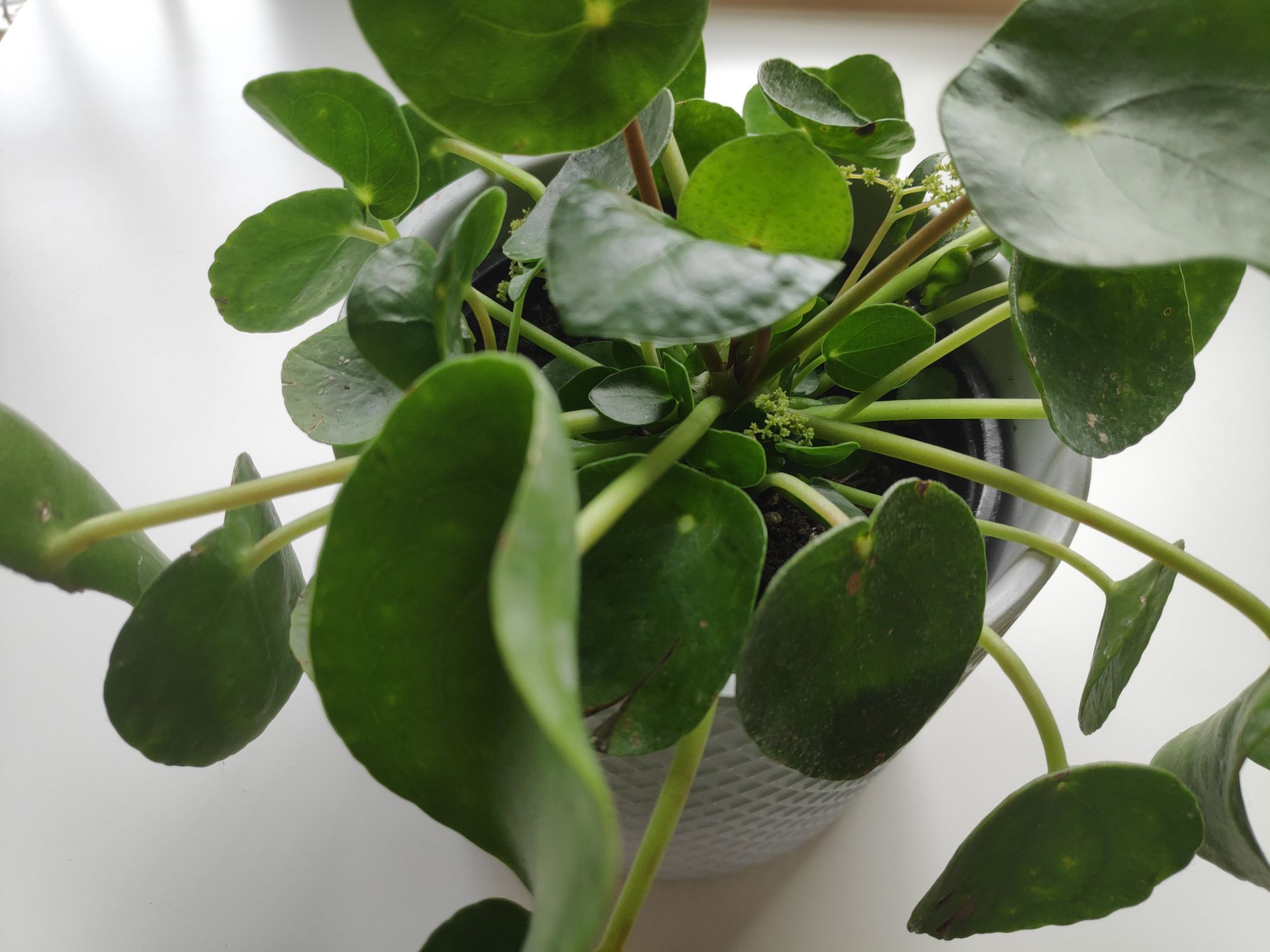Pilea peperomioides, common names: Chinese money plant, pancake plant, UFO plant, pass it on plant
Plant Care Cheat Sheet
Difficulty Level: Easy
Light Requirements: Medium indirect light
Humidity Requirements: Standard room humidity
The Pilea peperomioides became a popular houseplant in the past few years due to its striking and unique UFO-shaped leaves. Its species name, peperomioides, means "Peperomia-like", which is appropriate since the round leaves have historically led many to believe it is a Peperomia.
Although this plant has no particularly difficult requirements, based on my experience the saucer-like leaves can be finicky in the wrong conditions.
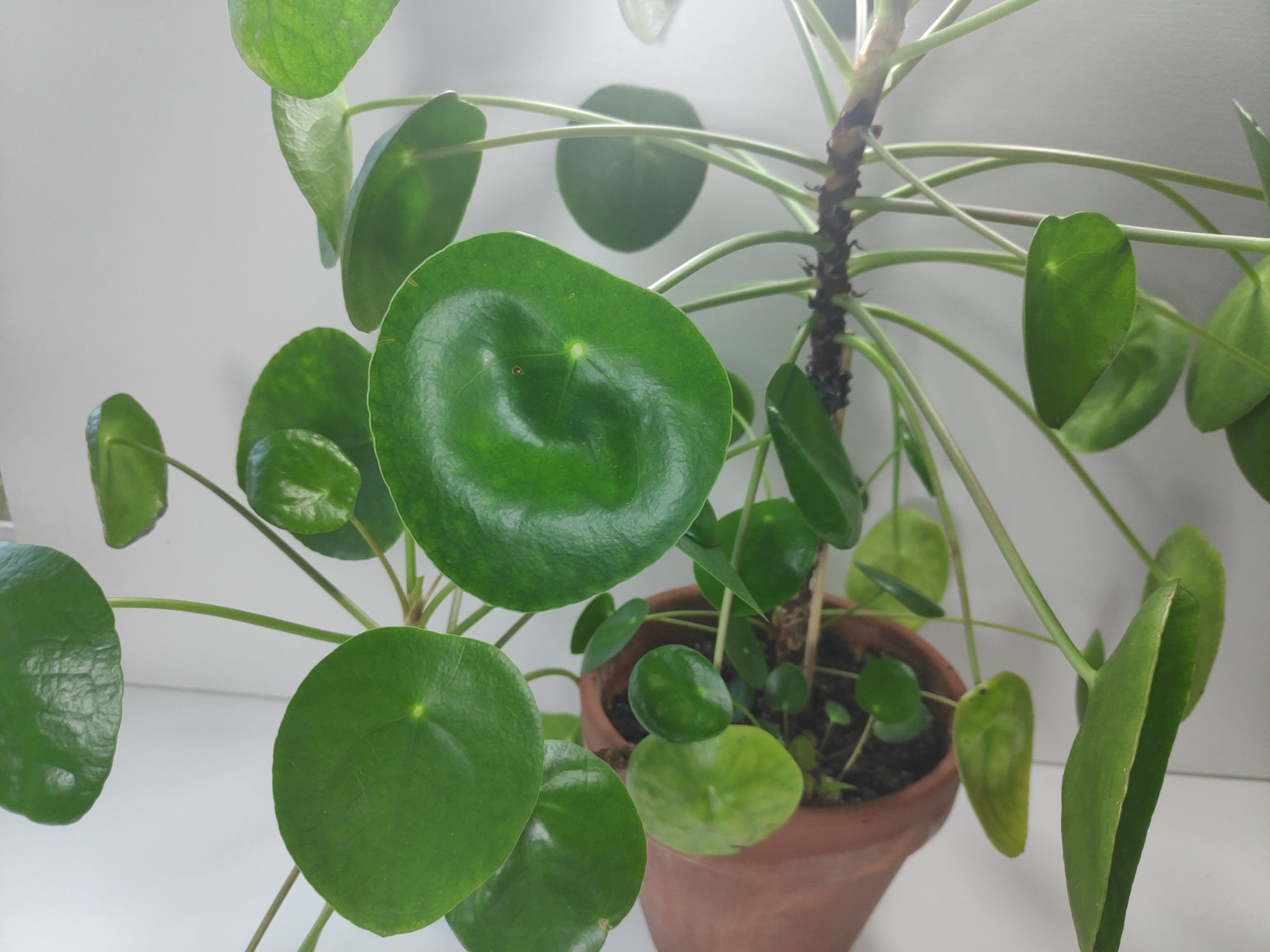
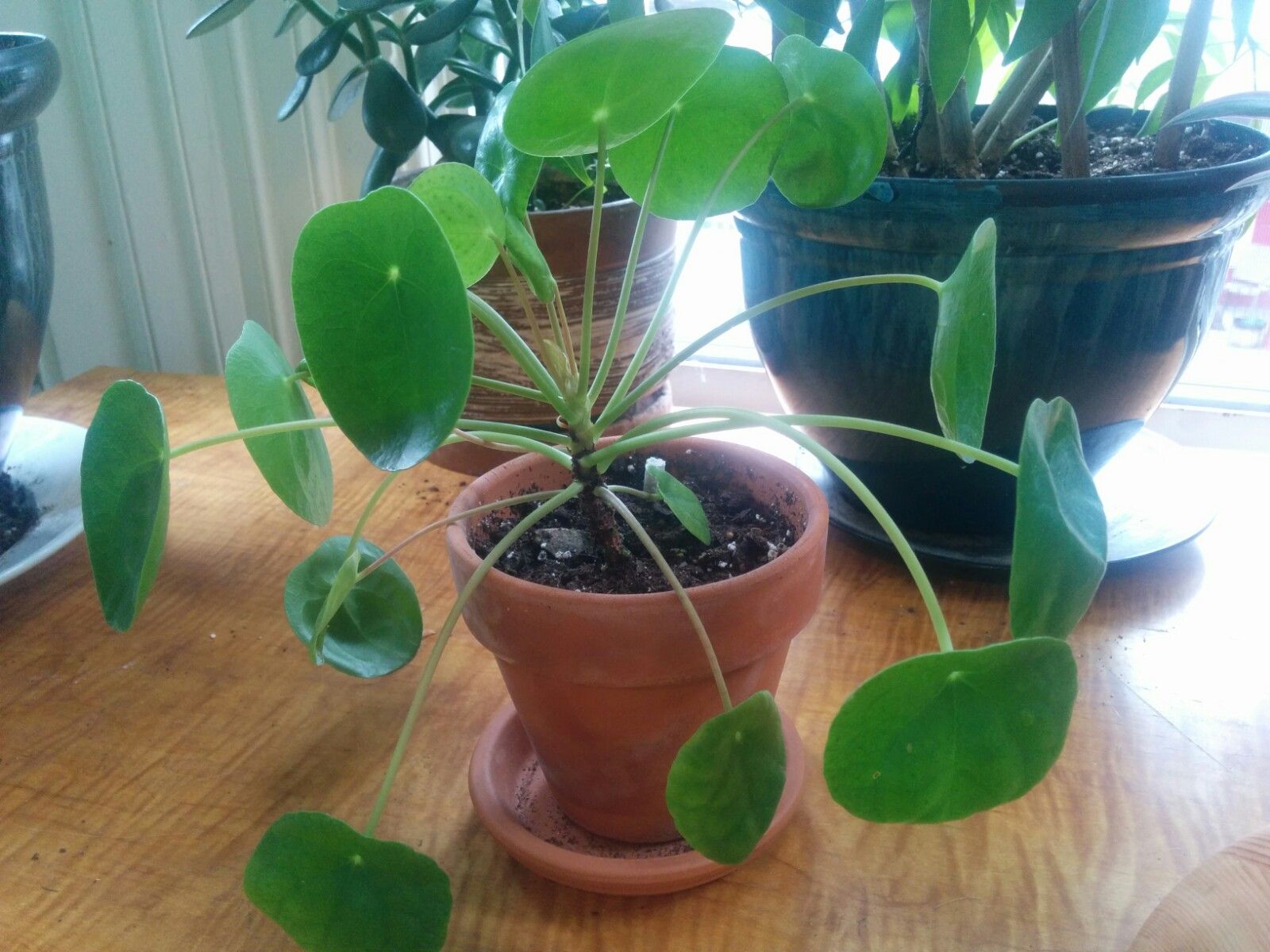
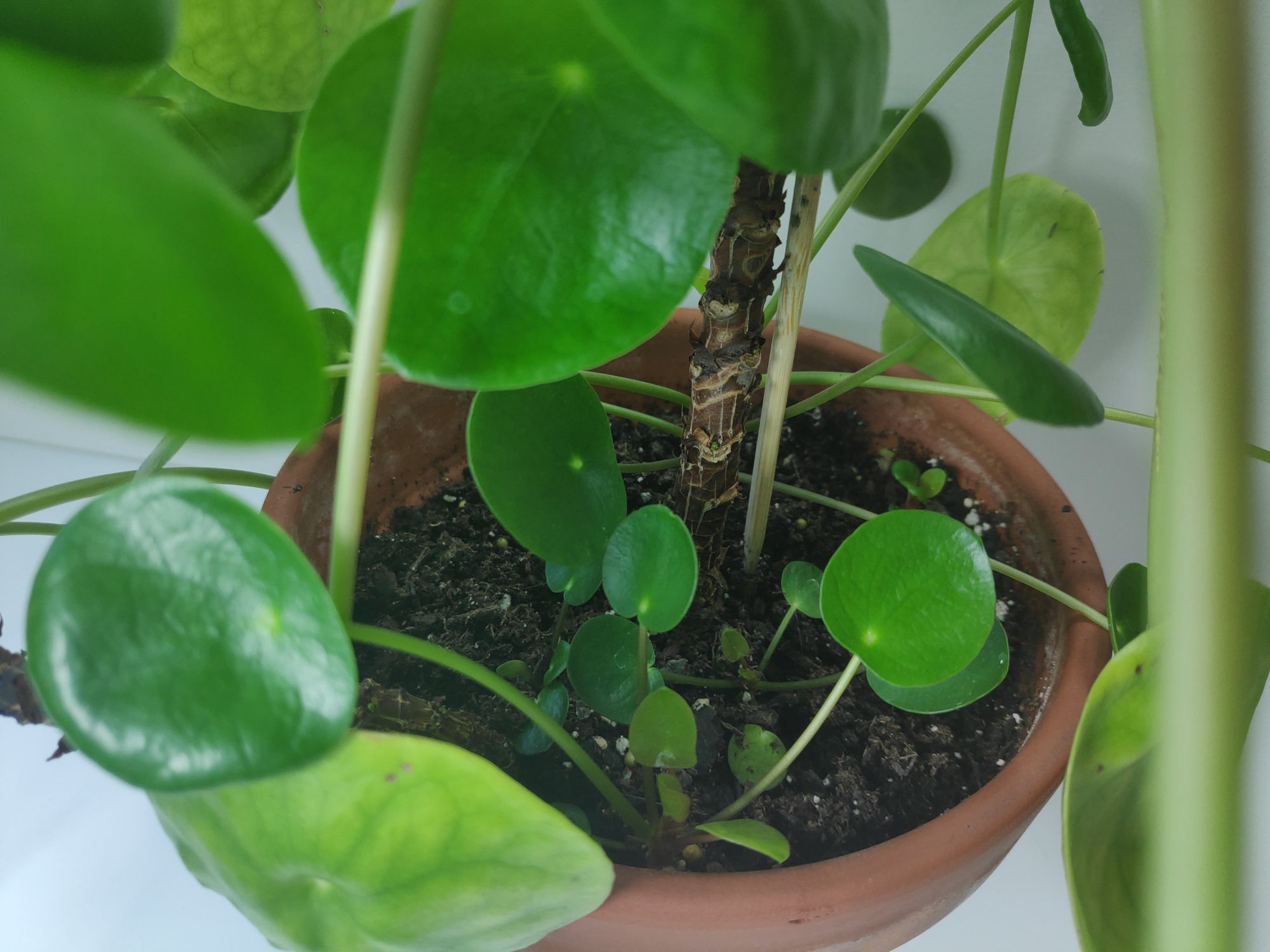
Care Requirements
The Pilea peperomioides is generally happy in medium indirect light. Avoid direct sunlight on the foliage. I typically keep mine a few feet back from an East-facing window, or on the other side of the room from a Southern exposure window. Rotate your plant 90 degrees every month to grow a well-balanced plant.
Water your pilea thoroughly when the top inch of soil feels dry, and ensure the pot provides good drainage. Either a terracotta or plastic pot is fine, however you will likely have to water your plant more if it's in terracotta. The leaves do droop a bit when the plant is thirsty, so if you notice drooping it's probably time to check your soil to see if it's dried out!
Pilea peperomioides will be fine in standard room humidity, but appreciates being misted occasionally.
Avoid letting the plant get too hot or too cold - room temperature is just right for Pilea peperomioides.

Pilea peperomioides propagation
One of the best parts of Pilea peperomioides is how easy it is to propagate this plant to either grow your collection for free, or share with a friend. The ease of propagation has led to the plant's nickname, "the pass it on plant".
The Pilea essentially propagates itself. Little shoots will pop up out of the roots with young plants attached. When a shoot is at least one inch long, it can safely be removed from the mother plant and rooted.
Cut the stem of the young shoot as close to the mother plant as you can with a clean, sharp clipper. The cutting can then be rooted in soil or rooted in water and transplanted to soil. You may want to dip the cut end of the stem in rooting hormone prior to planting the cutting in soil to help encourage growth, however it is not necessary.
Depending on your preferred style, you can either let the babies grow out for a fuller, more bushy Pilea plant, or you can snip the babies as they pop up for a bunch of more minimalist plants.
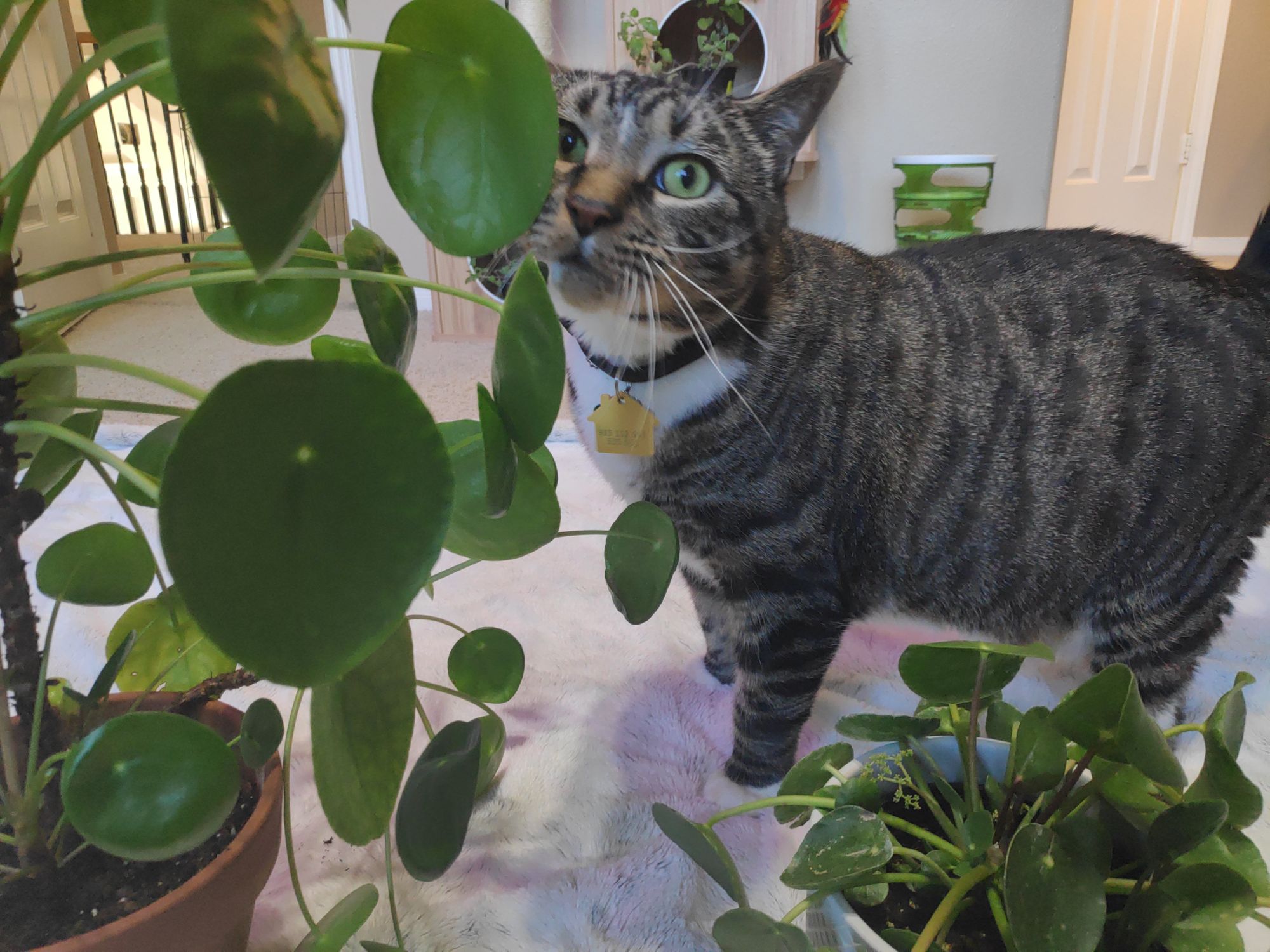
Pet safe plant!
Pilea peperomioides is non-toxic to cats and dogs.
